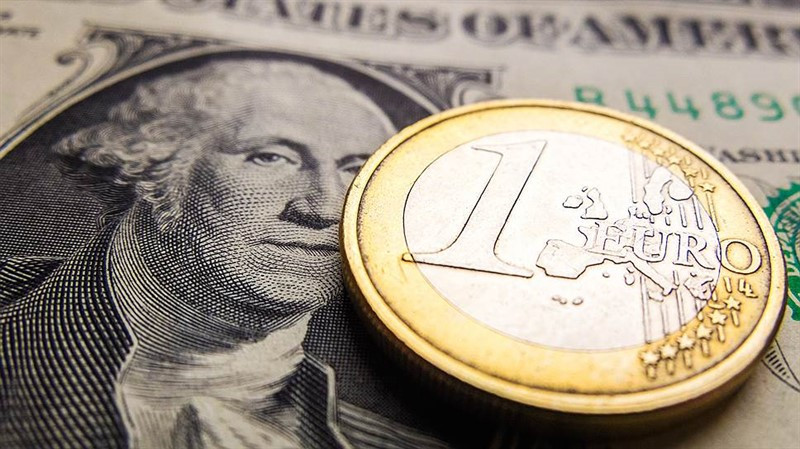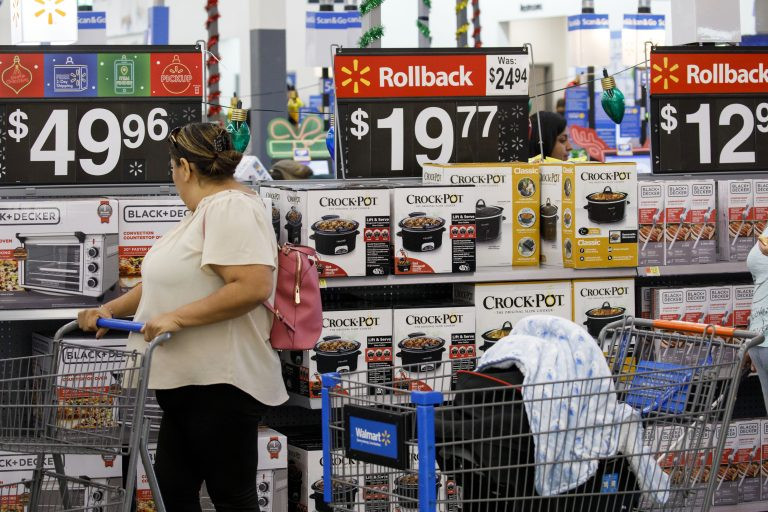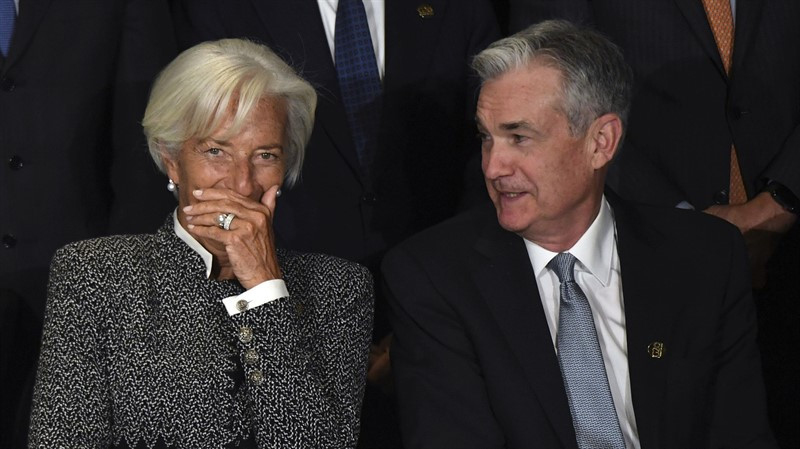
At the beginning of last week, most analysts predicted that the EUR/USD pair would continue trading in the range formed back in November (1.1220-1.1385), and with a predominance of bearish sentiment.
The main reason for the further strengthening of the dollar was the US central bank's hawkish intentions to complete the quantitative easing program, raise interest rates and start reducing the balance sheet.
Playing back these expectations, last Monday the dollar showed that it is still full of determination and strength.
However, the events that followed caused confusion among many market participants. The greenback moved to a decline against its main competitors, including the euro, even despite the fact that FOMC members one by one tightened their rhetoric, and some of them started talking about four rounds of federal funds rate hikes this year.
On Tuesday, January 11, as part of a speech to the Senate Banking Committee, Federal Reserve Chairman Jerome Powell said that the central bank is ready to move to raising interest rates in order to avoid overheating of the national economy. At the same time, he expressed hope that disruptions in supply chains will gradually come to naught this year, which should slow down the rate of inflation.
Thus, Powell eased fears that the central bank would be overly aggressive in terms of tightening its policy.
As a result, the greenback went into a peak, and the EUR/USD pair, instead of moving down, went up.
The next day, on Wednesday, January 12, the euro further strengthened its position against the greenback, which allowed the main currency pair to break through the upper limit of the one-and-a-half-month range.
The growth of EUR/USD accelerated after the release of December inflation data in the United States, which generally corresponded to forecasts and did not provide significant support to the dollar. Although the United States registered the highest inflation in almost forty years, investors preferred to resort to the "buy on rumors, sell on facts" strategy.

"Despite US inflation data and hawkish statements by the head of the St. Louis Fed, James Bullard, about four rate hikes in 2022, the greenback suffered sharp losses, and the EUR/USD pair broke through resistance at 1.1386, which limited its actions since the end of November," noted Saxo Bank strategists.
"The next key resistance area is at 1.1500-1.1525. That is, at the levels that were observed before the significant collapse on November 10. Ironically, this happened when the "hot" October CPI in the US caused a serious reassessment of the Fed's potential to raise rates in 2022," they added.
No less strange events, according to experts, occurred on Thursday, January 13.
"We have witnessed the classic withdrawal of investors from risk, which led to a slight decrease in the yield of long-term US bonds and a sharp drop in US stocks. What was not "classic" was that the US dollar remained mostly weaker against pro-cyclical currencies," Saxo Bank said.
"Next, along with observing the consolidation of greenback losses, we should pay attention to the 1.1400 area in the EUR/USD pair. If these levels do not stay, it will mean that the breakdown of the dollar after the publication of the US consumer price index on Wednesday was just a short-term compression, meaning practically nothing, except that expectations of actions by the Fed should rise significantly to become a concrete driver of the strength of the US currency," the bank's analysts said.
The dollar managed to recover only at the end of the last five days.
After a three-day decline on Friday, the greenback rose more than 0.3% against the euro. Touching a two-month peak around 1.1480, the EUR/USD pair rolled back to 1.1415 and closed in negative territory.
Apparently, investors decided to lock in profits ahead of the long weekend in the United States.
It is noteworthy that the strengthening of the dollar against the single currency was observed against the background of the release of weak statistics on the United States.
Thus, retail sales in the country in December fell by 1.9% compared to November, while a decrease of only 0.1% was expected. The volume of industrial production last month unexpectedly decreased by 0.1% compared to November. The consumer sentiment index from the University of Michigan, reflecting the degree of household confidence in the US economy, according to a preliminary estimate, fell worse than forecast in January – to 68.8 points from December's 70.6 points.
Such statistics are unlikely to prompt the US central bank to take more decisive action.
The Fed is approaching the moment when it will have to raise the benchmark interest rate, said New York Fed President John Williams last Friday.
"The US central bank had to accelerate the winding down of the bond repurchase program, and the next step of the Fed to reduce the volume of stimulation of the national economy will be a gradual increase in the base rate from the current very low level to more normal values," said J. Williams. His comments supported the dollar.
At the same time, the euro was pressed by the words of European Central Bank President Christine Lagarde about the central bank's readiness to maintain stable prices.
"Accommodative monetary policy is still necessary for inflation to settle at 2.0% in the medium term," she said.

UBS analysts predict a minimum euro-dollar exchange rate of $1.1 in the first half of this year. This is due to the ECB's soft approach to monetary policy and inflation suppression compared to the Fed, which weakens the euro, they say.
The EUR/USD pair seems to have found support around 1.1400 after a decline on Friday. At the beginning of the new week, it is trading in a fairly narrow range, changing within 30 points. In the absence of important high-level macroeconomic data, as well as the celebration of Martin Luther King Day in the United States, the activity of traders will remain low.
The Empire State index of manufacturing activity from the Federal Reserve Bank of New York will be published on Tuesday, a similar indicator from the Federal Reserve Bank of Philadelphia will be released on Thursday, as well as updated reports on applications for unemployment benefits and sales of ready-made housing in the United States.
However, these data are not likely to significantly change market expectations regarding the Fed's rate hike in March.
The US central bank is entering the traditional period of calm ahead of the upcoming monetary policy meeting on January 24-25.
As for the eurozone, the ZEW economic sentiment index will be released on Tuesday, and final inflation data for December will be released on Thursday. On the same day, the ECB will publish the minutes from its last meeting.
The EUR/USD pair is staying above 1.1400, and the technical picture suggests that a break above 1.1500 will clear its further path to the north, Scotiabank analysts believe.
"The support in the area of 1.1400 resisted on Friday evening, and the pair managed to maintain an upward trend. The absorption of the recent highs and the 1.1500 level (as well as the 100-day moving average at 1.1502) will be a significant event for the bulls and will allow the pair to continue growing. In case of a drawdown below 1.1400, support in the area of 1.1375–1.1385 will come into play," they noted.
Meanwhile, ING believes that the balance of risks for the main currency pair is still shifted downward, primarily due to discrepancies in the monetary policy of the ECB and the Fed.
"We do not believe in the current weakness of the dollar, and therefore we tend to think that the EUR/USD pair will fall rather than rise higher. Most of the attention in the coming week will be focused on the minutes from the December ECB meeting. This is a chance to assess the strength of the hawkish bloc in the policy discussion. Nevertheless, any hawkish news should be challenged by the fact that the situation with Omicron in Europe was not so bad when the meeting took place, compared to the following weeks," the bank's strategists said.
"We believe that the EUR/USD pair will slide to 1.1200-1.1300 in the near future. We expect stabilization below 1.1500 as a sign that the bullish push on the pair is temporary," they added.
 English
English 
 Русский
Русский Bahasa Indonesia
Bahasa Indonesia Bahasa Malay
Bahasa Malay ไทย
ไทย Español
Español Deutsch
Deutsch Български
Български Français
Français Tiếng Việt
Tiếng Việt 中文
中文 বাংলা
বাংলা हिन्दी
हिन्दी Čeština
Čeština Українська
Українська Română
Română

